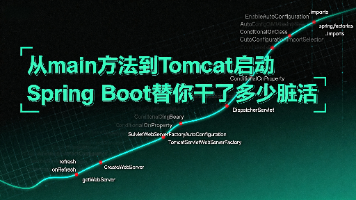台积电生态工程深度解析:从晶圆厂到蜂巢的系统架构迁移
台积电近日开展的"积蜜"项目绝非简单的企业CSR行为,而是一场将生态系统视为复杂系统进行工程化改造的技术实践。本文将从系统架构、数据监控、循环算法等角度,深度解析台积电如何将芯片制造领域的工程技术迁移到生态保护中。台积电的生态项目展示了跨领域工程技术迁移系统思维统一性:芯片制造与生态管理的系统架构高度相似精度标准可迁移:半导体级精度标准可应用于环境管理数据驱动决策:基于传感器网络和AI算法的精准环
·
当半导体巨头将工厂视为生态系统,用工程思维解决环境问题
概述:生态系统的工程化再造
台积电近日开展的"积蜜"项目绝非简单的企业CSR行为,而是一场将生态系统视为复杂系统进行工程化改造的技术实践。本文将从系统架构、数据监控、循环算法等角度,深度解析台积电如何将芯片制造领域的工程技术迁移到生态保护中。
核心架构:生态系统的闭环设计
台积电在晶圆制造中成熟的闭环控制系统被完美复用到生态环境管理:

技术实现:生态系统的数据化监控
蜜蜂作为生物传感器集群
class BioSensorCluster:
def __init__(self):
self.behavior_patterns = {
'foraging_efficiency': 0,
'population_health': 0,
'honey_production': 0
}
def monitor_ecosystem_health(self):
# 实时采集蜜蜂行为数据
foraging_data = self.collect_foraging_metrics()
population_data = self.analyze_population_dynamics()
production_data = self.measure_honey_quality()
# 计算生态健康指数
health_score = self.calculate_health_index(
foraging_data,
population_data,
production_data
)
return health_score
def detect_anomalies(self):
# 使用类似晶圆缺陷检测的算法
anomaly_detection_algorithm = SSAD(Seasonal-Sensitive Anomaly Detection)
return anomaly_detection_algorithm.apply(self.behavior_patterns)水资源管理的循环算法
public class WaterRecyclingSystem {
private double currentRecycleRate; // 当前循环利用率
private double targetRecycleRate = 0.90; // 目标循环率90%
// 基于PID控制器的水资源调度算法
public void optimizeWaterUsage() {
PIDController waterPID = new PIDController(0.8, 0.2, 0.1);
while (currentRecycleRate < targetRecycleRate) {
double error = targetRecycleRate - currentRecycleRate;
double adjustment = waterPID.calculate(output, targetRecycleRate);
adjustWaterFlow(adjustment);
monitorWaterQuality();
// 实时更新循环率
currentRecycleRate = calculateCurrentRecycleRate();
}
}
private void monitorWaterQuality() {
// 使用光谱分析技术监测水质
SpectralAnalyzer analyzer = new SpectralAnalyzer();
WaterQualityReport report = analyzer.generateReport();
if (report.containsContaminants()) {
activatePurificationSystem(report.getContaminantTypes());
}
}
}工程指标:半导体级的环境管理标准
台积电将芯片制造的质量标准应用于生态管理:
| 工程指标 | 芯片制造标准 | 生态管理应用 | 实现技术 |
|---|---|---|---|
| 纯净度 | 99.999999999% | 水质无污染 | 超滤膜技术 |
| 循环率 | 超纯水循环 | 水资源90%+再利用 | 闭环处理系统 |
| 回收率 | 材料回收 | 废弃物97%回收 | 智能分拣机器人 |
| 精准度 | 纳米级精度 | 生态干预精准控制 | IoT传感器网络 |
算法创新:生态管理的机器学习应用
基于时间序列的生态预测
import tensorflow as tf
from tf_keras.models import Sequential
from tf_keras.layers import LSTM, Dense
class EcosystemPredictor:
def __init__(self):
self.model = self.build_lstm_model()
def build_lstm_model(self):
# 使用LSTM网络预测生态系统演化
model = Sequential([
LSTM(50, return_sequences=True, input_shape=(30, 10)),
LSTM(50),
Dense(1)
])
model.compile(optimizer='adam', loss='mse')
return model
def train_on_ecological_data(self, sensor_data):
# 使用历史生态数据训练预测模型
X, y = self.preprocess_data(sensor_data)
self.model.fit(X, y, epochs=100, verbose=0)
def predict_ecosystem_trends(self, current_data):
prediction = self.model.predict(current_data)
return prediction遗传算法优化植被配置
def optimize_vegetation_layout():
# 使用遗传算法计算最优植被配置
population = initialize_population()
for generation in range(100):
# 评估适应度(生态效益最大化)
fitness_scores = evaluate_fitness(population)
# 选择、交叉、变异
selected = selection(population, fitness_scores)
offspring = crossover(selected)
population = mutation(offspring)
return best_solution系统集成:IoT平台的环境监控
台积电构建了完整的环境监控IoT平台:
// 简化的传感器数据采集系统
class EnvironmentalMonitor {
public:
struct SensorData {
float air_quality;
float water_ph;
float soil_nutrients;
int species_count;
};
vector<SensorNode> sensor_nodes;
void collect_data() {
for (auto& node : sensor_nodes) {
SensorData data = node.read_sensors();
transmit_to_central_system(data);
}
}
private:
void transmit_to_central_system(const SensorData& data) {
// 使用LoRaWAN协议低功耗传输
LoRaWAN.transmit(encrypt_data(data));
}
};总结:工程技术迁移的启示
台积电的生态项目展示了跨领域工程技术迁移的巨大潜力:
-
系统思维统一性:芯片制造与生态管理的系统架构高度相似
-
精度标准可迁移:半导体级精度标准可应用于环境管理
-
数据驱动决策:基于传感器网络和AI算法的精准环境干预
-
闭环设计理念:从线性消耗到循环再生的工程范式转变
这种将复杂系统工程方法论应用于生态环境的做法,为科技公司提供了新的技术发展思路:核心工程技术能力不仅可以用于主营业务,还可以成为解决社会和环境问题的强大工具。
真正的技术先进性体现在能够将最尖端的技术能力,创造性地应用于看似完全不相关的领域,并产生突破性的解决方案。
点击卡片,来开源社区,参与1024程序员节 - 工业智能体大赛,万元奖池已备好,就等你来!
更多推荐
 已为社区贡献12条内容
已为社区贡献12条内容









所有评论(0)